 W
WThe Independent State of Croatia was a World War II-era puppet state of Nazi Germany and Fascist Italy. It was established in parts of occupied Yugoslavia on 10 April 1941, after the invasion by the Axis powers. Its territory consisted of most of modern-day Croatia and Bosnia and Herzegovina, as well as some parts of modern-day Serbia and Slovenia, but also excluded many Croat-populated areas in Dalmatia, Istria, and Međimurje regions.
 W
WThe 369th (Croatian) Infantry Division was a legionary division of the German Army (Wehrmacht) during World War II.
 W
WThe 373rd (Croatian) Infantry Division was a division of the German Army during World War II. It was formed in June 1943 using a brigade from the Home Guard of the Independent State of Croatia with the addition of a German cadre. The division was commanded by Germans down to battalion and even company level in nearly all cases, and was commonly referred to as a "legionnaire division". Originally formed with the intention of service on the Eastern Front, it was used instead for anti-Partisan operations in the territory of the NDH until the end of the war. It fought mainly in the western areas of the NDH, and was involved in the attempt to kill or capture the leader of the Partisans, Josip Broz Tito, in May 1944. Severely depleted by desertion, the division withdrew towards the Reich border in the early months of 1945, eventually surrendering to the Partisans on 10 May 1945 near Brežice in modern-day Slovenia.
 W
WThe 392nd (Croatian) Infantry Division was a so-called "legionnaire" division of the German Army during World War II. It was formed in August 1943 using Croatian Home Guard soldiers with a German cadre. The division was commanded by Germans down to battalion and even company level in nearly all cases. Originally formed with the intention of service on the Eastern Front, this did not eventuate, and the division was used in anti-Partisan operations in the territory of the Independent State of Croatia (NDH) until the end of the war. It was commonly known as the Blue Division.
 W
WPrince Aimone, 4th Duke of Aosta was a prince of Italy's reigning House of Savoy and an officer of the Royal Italian Navy. The second son of Prince Emanuele Filiberto, Duke of Aosta he was granted the title Duke of Spoleto on 22 September 1904. He inherited the title Duke of Aosta on 3 March 1942 following the death of his brother Prince Amedeo, in a British prisoner of war camp in Nairobi.
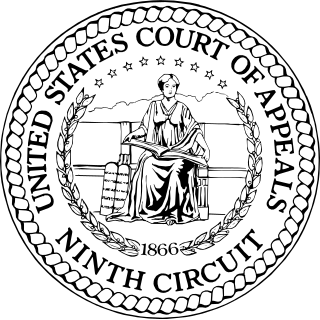 W
WAlperin v. Vatican Bank was an unsuccessful class action suit by Holocaust survivors brought against the Vatican Bank and the Franciscan Order filed in San Francisco, California, on November 15, 1999. The case was initially dismissed as a political question by the District Court for the Northern District of California in 2003, but was reinstated in part by the Court of Appeals for the Ninth Circuit in 2005. That ruling attracted attention as a precedent at the intersection of the Alien Tort Claims Act (ATCA) and the Foreign Sovereign Immunities Act (FSIA).
 W
WThe Antisemitic Exhibition in Zagreb took place in the Art Pavilion in Zagreb, the capital city of the Independent State of Croatia (NDH), in May 1942.
 W
WThe Occupation of Vojvodina from 1941 to 1944 was carried out by Nazi Germany and its client states / puppet regimes: Horthy's Hungary and Independent State of Croatia.
 W
WMarijan Mijo Babić (1903–1941), nicknamed Giovanni, was a deputy of the Croatian fascist dictator Ante Pavelić, and the first commander of all concentration camps in the Independent State of Croatia. He was head of the Third Bureau of the Ustasha Surveillance Service, and was also a member of the Main Ustaše Headquarters, one of the two main deputies of Pavelić.
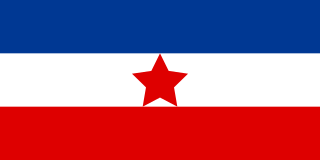 W
WThe Bihać Republic was a short-lived republic that existed between November 1942 and January 1943 in a liberated area of Nazi-occupied Yugoslavia. It was established by the Partisan resistance movement following the liberation of Bihać. Bihać became its administrative center and the first session of the Anti-Fascist Council of the People's Liberation of Yugoslavia (AVNOJ) was held there on 26 November 1942.
 W
WCatholic clergy involvement with the Ustaše covers the role of the Croatian Catholic Church in the Independent State of Croatia (NDH), a Nazi puppet state created on the territory of Axis-occupied Yugoslavia in 1941.
 W
WThe great counties or grand governorates were the primary territorial subdivisions of the Independent State of Croatia. In 1941-1943, there were twenty-two of them, with the capital city of Zagreb serving as the twenty-third.
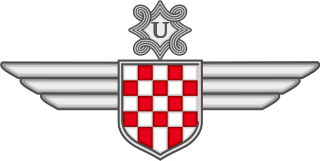 W
WThe Croatian Air Force Legion, or HZL, was a unit of the Luftwaffe, composed entirely of volunteers drawn from the nazi puppet-state, the Independent State of Croatia. Many of them had previously served in the Royal Yugoslav Air Force in April 1941 during the Nazi Invasion of Yugoslavia.
 W
WThe Croatian Anti-Aircraft Legion was an anti-aircraft (Flak) unit in the service of the German Air Force (Luftwaffe) during World War Two. It was composed of Croat volunteers from the Independent State of Croatia (NDH).
 W
WThe Croatian Home Guard was the land army part of the armed forces of the Independent State of Croatia which existed during World War II.
 W
WThe Croatian Naval Legion was a contingent of volunteers from the Independent State of Croatia that served with Nazi Germany's navy Kriegsmarine, on the Black Sea and Adriatic Sea during World War II.
 W
WThe Croatian Orthodox Church was a religious body created during World War II by the Fascist Ustaše regime in the Independent State of Croatia (NDH). It was created in order to assimilate the remaining Serb minority and also to unite other Orthodox communities into a state-based Orthodox Church.
 W
WThe Independent State of Croatia (1941-1945) was a European country located in Southern Europe, corresponding approximately to today's Croatia and Bosnia and Herzegovina. Listed below are its embassies and consulates: Protectorate of Bohemia and Moravia Prague Bulgaria Sofia (Embassy) Finland Helsinki (Embassy) Germany Berlin (Embassy) Vienna Graz (Consulate) Ljubljana Hungary Budapest (Embassy) Italy Rome (Embassy) Milan Ljubljana Zadar Romania Bucharest (Embassy) Serbia Belgrade Slovakia Bratislava (Embassy) Spain Madrid (Embassy) Switzerland Zurich
 W
WForeign Ministry of the Independent State of Croatia was a ministry of the Government of the Independent State of Croatia established on a provision on 24 June 1941. This provision also contained determinations of activity of this ministry.
 W
WThe Croatian State Government was the government of the Independent State of Croatia from 16 April 1941 until 8 May 1945.
 W
WAfter the Kingdom of Yugoslavia was invaded by the Axis powers during World War II, all of Bosnia was ceded to the newly created Independent State of Croatia. Axis rule in Bosnia led to widespread persecution and mass-killings of native undesirables and anti-fascists. Many Serbs themselves took up arms and joined the Chetniks, a Serb nationalist and royalist resistance movement that conducted ineffective guerrilla warfare against the occupying Nazi forces. On 12 October 1941 a group of 108 notable Muslim citizens of Sarajevo signed the Resolution of Sarajevo Muslims by which they condemned the persecution of Serbs organized by Ustaše, made distinction between Muslims who participated in such persecutions and whole Muslim population, presented information about the persecutions of Muslims by Serbs and requested security for all citizens of the country, regardless of their identity.Bosnia was the geographical mother of the partisan movement, providing ample space amongst its mountains for training and development.
 W
WThe Holocaust in Croatia (2016) is a book by Ivo and Slavko Goldstein, first published as Holokaust u Zagrebu in 2001. It received positive reviews in English-language publications, and was praised for its evenhanded and nuanced approach to controversial subject matter. It was a finalist for the National Jewish Book Award.
 W
WThe Holocaust in the Independent State of Croatia is a term which is primarily used in reference to the genocide of Jews, but sometimes, it is also used in reference to the genocide of Serbs and Romani (Porajmos), within the Independent State of Croatia, a fascist puppet state which existed during World War II, was led by the Ustaše regime, and ruled an occupied area of Yugoslavia which included most of the territory of modern-day Croatia, the whole of modern-day Bosnia and Herzegovina and the eastern part of Syrmia (Serbia). Of the 39,000 Jews who lived in the NDH in 1941, the United States Holocaust Memorial Museum states that more than 30,000 were killed. Of these, 6,200 were shipped to Nazi Germany and the rest of them were killed in the ISC, the vast majority were killed in Ustaše-run concentration camps, such as Jasenovac. The Ustaše were the only quisling forces in Europe who operated their own extermination camps for the purpose of killing Jews and members of other ethnic groups.
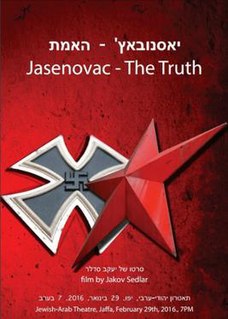 W
WJasenovac – istina is a 2016 revisionist documentary film by the Croatian filmmaker Jakov Sedlar. The film contends that the extent of the Holocaust in Croatia and the World War II-era genocide of the country's Serb population was exaggerated through post-war communist propaganda. It focuses primarily on Jasenovac, a concentration camp run by Croatia's wartime fascist Ustaše government where an estimated 100,000 are believed to have perished, and suggests that the actual death toll never exceeded 18,000. The film also argues that Jasenovac continued being used as a concentration camp by Yugoslavia's communist authorities well after World War II, and that more inmates perished when it was run by the communists than when it was run by the Ustaše.
 W
WThe Krnjeuša massacre, sometimes referred to as the Krnjeuša pogrom, was a massacre of civilians committed by local Serb rebels led by Mane Rokvić on 9-10 August 1941, during the Drvar uprising.
 W
WThe kuna was the currency of the Independent State of Croatia in the period between 1941 and 1945 during World War II. The word kuna means "marten" in Croatian and the same word is used for the current Croatian kuna currency. This kuna was subdivided into 100 banica. It was preceded and replaced by the Yugoslav dinar.
 W
WThe Battle of Kupres was a battle fought in 1942 during World War 2 in Independent State of Croatia between the forces of the Independent State of Croatia and the Yugoslav Partisans, in and around the town of Kupres in western Bosnia. The Partisans launched three concentrated attacks against the garrison of 1,500 men during the nights of 11/12 August, 14 August and 19 August. Although outnumbered, the Black Legion, Croatian Home Guard and local militia units successfully defended the town against several Partisan brigades.
 W
WLorković–Vokić plot was a mid-1944 attempt initiated by Interior Minister Mladen Lorković and Armed Forces Minister Ante Vokić to form a coalition government with the Croatian Peasant Party (HSS), abandon the Axis powers and align the Independent State of Croatia with the Allies with the help of the Croatian Home Guard. The plot originated from the HSS, which was also involved in the negotiations with the Allies. The plot ended with massive arrests and the execution of the major plotters, including Lorković and Vokić.
 W
WIn May and June 1945, at the end of World War II in Europe, the forests near Macelj, a village in northern Croatia, were the location where a large number of soldiers, women and children, were shot by soldiers of the Yugoslav army. This was part of the events referred to as the Bleiburg repatriations.
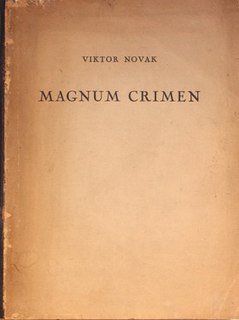 W
WThe Magnum Crimen is a book about clericalism in Croatia from the end of 19th century until the end of the Second World War. The book, whose full title is Magnum crimen – pola vijeka klerikalizma u Hrvatskoj, was written by a former Catholic priest and a professor and historian at Belgrade University, Viktor Novak (1889–1977). The book was first published in Zagreb in 1948.
 W
WVinko Nikolić was a Croatian writer, poet and journalist, and a high-ranking official in the fascist Independent State of Croatia (NDH). After the downfall of NDH, he emigrated to Buenos Aires, Argentina, where he lived in exile until returning to Croatia, several years before his death.
 W
WAnte Pavelić was a Croatian politician and dictator who founded and headed the fascist ultranationalist organization known as the Ustaše in 1929 and governed the Independent State of Croatia, a fascist puppet state built out of parts of occupied Yugoslavia by the authorities of Nazi Germany and Fascist Italy, from 1941 to 1945. Pavelić and the Ustaše persecuted many racial minorities and political opponents in the NDH during the war, including Serbs, Jews, Romani, and anti-fascists, becoming one of the key figures of the Genocide of Serbs and the Holocaust in NDH.
 W
WPoglavnik was the title used by Ante Pavelić, leader of the World War II Croatian movement Ustaše and of the Independent State of Croatia between 1941 and 1945.
 W
WThe Posavje District was an administrative division of the Independent State of Croatia. It was made of the kotars of Brod, Županja, Brčko, Derventa, Gradačac and Bijeljina. Its capital was in Brod.
 W
WThis is the list of Croatian Righteous Among the Nations. As of 1 February 2019, 117 Croatians have been honored with this title by Yad Vashem for saving Jews during World War II.
 W
WSabotage at the General Post Office in Zagreb took place during the Second World War on Sunday, 14 September 1941. Zagreb was the capital city of the Independent State of Croatia (NDH), a puppet state of Nazi Germany.
 W
WThe Ustaša – Croatian Revolutionary Movement, commonly known as Ustaše or by anglicised versions Ustasha or Ustashe, was a Croatian fascist and ultranationalist organization active, as one organization, between 1929 and 1945. Its members murdered hundreds of thousands of Serbs, Jews, and Roma as well as political dissidents in Yugoslavia during World War II.
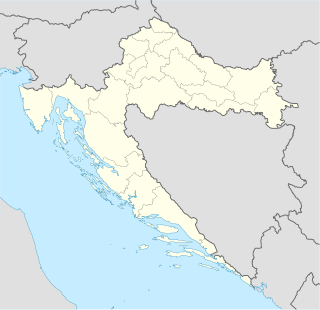 W
WThe Voćin massacre was the killing of 350 Serb civilians in Voćin, Independent State of Croatia, by the Ustaše Croatian fascist organization on 14 January 1942, during World War II. The massacre was carried out as retaliation for partisans' action in Papuk.
 W
WWorld War II in Yugoslavia refers to World War II military operations that occurred on the territory of the then-Kingdom of Yugoslavia. Conflict in Yugoslavia began on 6 April 1941, when the Kingdom of Yugoslavia was swiftly conquered by Axis forces and partitioned between Germany, Italy, Hungary, Bulgaria and their client regimes. Shortly after Germany attacked the USSR on 22 June 1941, the communist-led republican Yugoslav Partisans, on orders from Moscow, launched a guerrilla liberation war fighting against the Axis forces and their locally established puppet regimes, including the Axis-allied Independent State of Croatia (NDH) and the Government of National Salvation in the German-occupied territory of Serbia. This was dubbed the National Liberation War and Socialist Revolution in post-war Yugoslav historiography. Simultaneously, a multi-side civil war was waged between the Yugoslav communist Partisans, the Serbian royalist Chetniks, the Axis-allied Croatian Ustashas and Home Guard, Serbian Volunteer Corps and State Guard, Slovene Home Guard, as well as Nazi-allied Russian Protective Corps troops.
 W
WZa dom spremni! was a salute used during World War II by the Croatian Ustaše movement. It was the Ustaše equivalent of the fascist or Nazi salute Sieg heil.